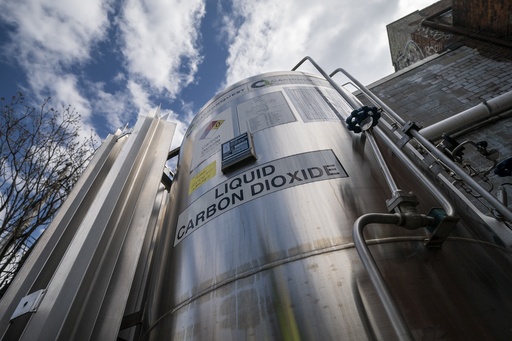
The unregulated carbon dioxide removal sector is urging the U.S. government to establish standards and regulations to enhance transparency and instill confidence in an industry that has attracted significant federal funding and private investment.
A report released by the Carbon Removal Alliance, a nonprofit organization representing various players in the field, presents recommendations aimed at improving monitoring, reporting, and verification practices. Currently, U.S. regulations regarding carbon removal are limited to safety protocols, while major industry participants like Heirloom and Climeworks are members of the alliance.
Giana Amador, the executive director of the alliance, emphasized that it is unusual for an industry to seek self-regulation, highlighting the importance of such a move. She explained that effective monitoring, reporting, and verification act as “climate receipts” that provide evidence of the amount of carbon captured and the duration for which it can be safely stored underground.
Amador voiced concerns that without federal oversight, competition suffers, pushing companies into a “marketing arms race” rather than allowing them to focus on delivering measurable climate benefits.
The alliance defines carbon removal as any method that captures carbon dioxide from the air and stores it permanently. Among the prevalent technologies is direct air capture, which involves filtering the air to extract carbon dioxide for underground storage.
The Inflation Reduction Act and the Bipartisan Infrastructure Law have collectively allocated approximately $12 billion for carbon management initiatives in the U.S. This funding includes support for the establishment of four Regional Direct Air Capture Hubs designed to capture at least 1 million tons of carbon dioxide annually. Two of these hubs are set to be developed in Texas and Louisiana.
Despite its promise, some climate scientists criticize direct air capture for its high costs and argue that it is far from being effectively scaled. They warn it could provide a loophole for the oil and gas sector to continue emissions.
Gernot Wagner, a climate economist at Columbia University, referred to this situation as a “moral hazard,” suggesting that reliance on such technology might allow continued pollution by the fossil fuel industry. He noted that while direct air capture reduces emissions, it might inadvertently prolong the operation of coal and gas plants.
In a notable acquisition, Occidental Petroleum Corporation bought the direct air capture firm Carbon Engineering Ltd for $1.1 billion in 2023. In a statement, Occidental’s CEO Vicki Hollub expressed that the partnership aims to expedite the global deployment of this technology at a significant scale, making it the go-to solution for businesses addressing hard-to-abate emissions.
However, Jonathan Foley, executive director of Project Drawdown, dismisses carbon dioxide removal technologies as a genuine climate solution. He expressed a cautious welcome for federal involvement that would lead to better monitoring of such projects, acknowledging the chaotic landscape of carbon removal efforts.
Foley raised concerns about the cost-effectiveness of these technologies, stating that it is often more economic to prevent carbon emissions than to attempt their removal. He questioned the rationale behind spending public funds on such high-cost solutions.
Katharine Hayhoe, chief scientist at The Nature Conservancy and professor at Texas Tech University, echoed the call for necessary regulations, given the substantial government subsidies and private investment in the direct carbon capture field. Nevertheless, she emphasized that addressing climate change requires a multifaceted approach beyond just carbon removal.
Hayhoe suggested that strategies should encompass improving energy efficiency, accelerating the transition to clean energy, reducing dependence on fossil fuels, and preserving ecosystems capable of sequestering carbon. While acknowledging the potential benefits of carbon removal, she cautioned that these technologies are “very high hanging fruit,” requiring significant resources to achieve.
Other scientists like Mark Z. Jacobson, a professor at Stanford University, outright reject carbon removal technologies, calling for their prohibition. Jacobson argued that these methods may inadvertently contribute to higher atmospheric carbon levels, explaining that even facilities using renewable energy for direct air capture could be diverting that clean energy away from replacing fossil fuel sources.
He argued that, while direct air capture may show reductions when viewed from a limited perspective, the broader implications reveal an increase in atmospheric carbon when considering the entire system.
